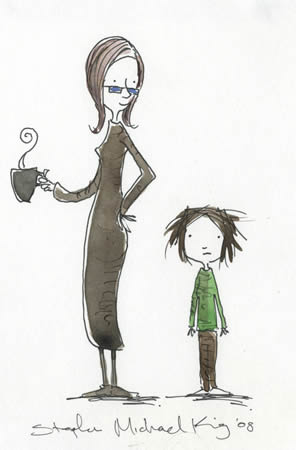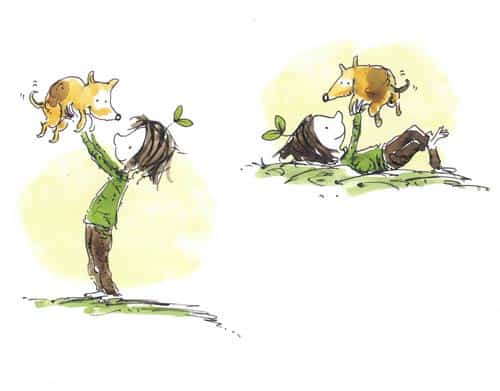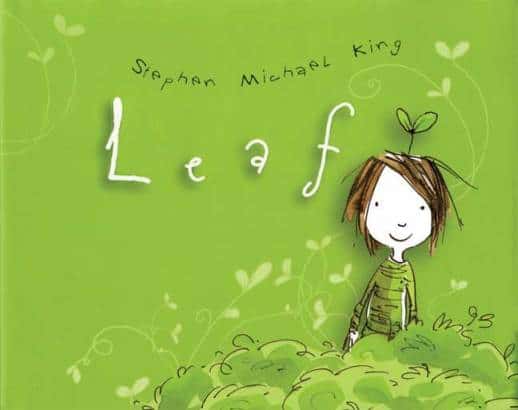Leaf by Australian storyteller Stephen Michael King is a wordless book comprising pictures and onomatopoeia.
How does one write flap copy for a (largely) wordless picture book? The publishers of leaf have obviously done a test read with a young reader called Amelia and they quoted her response for the flap.
This story reminds me of the advertisement for Tooheys Extra Dry — both are surreal and involve a dream sequence with real-life influence, and both are about what happens after planting hair.
But to linger for a moment on the word ‘surreal’:
Surrealism is used wrongly in everyday speech to mean “I don’t get it, I don’t understand”. But in an academic sense it means almost the opposite: It’s an abbreviation of ‘super-real’, in which we do understand a surrealist work of art by going past the surface and looking at the essence behind. The idea you dig for is more important than any conveyed by the first impression. Surrealist art makes the viewer work before understanding the meaning.
When it comes to children’s picture books, a boy with a leaf growing out of his head is surrealism. That’s not what you’d expect. Humour is rampant in surrealist picturebooks and kids’ films, in which the audience may be a part of the joke or even the butt of the joke.
CHARACTERS IN LEAF
The first thing you may notice about the boy is that his shirt is green and his trousers are brown. Obviously, the boy = the tree.
As for the mother, this is a caring but unsympathetic character — the opponent in this scenario. She, too, is tall and thin. (For genetic reasons, it makes sense, since the boy grows tall and thin himself.) A thin, angular mother in picturebooks is ‘not warm’.
Notice her coffee. The author/illustrator makes sure we notice it in fact; she holds it out against a purple background; she holds it out against the white space; she next seems to point to it, although in the setting she is simply reaching for the shears. The steam curling up from the coffee cup is the inspiration for the boy’s leap into imagination.
STORY STRUCTURE OF LEAF
SHORTCOMING
A boy does not like having his hair cut.
DESIRE
He wants to run in the wild with his dog with his long, untidy hair, au naturel.
OPPONENT
The mother figure, who wants his hair to be cut.

PLAN
He runs away from his scissors-wielding mother. He takes his dog for companionship and adventure.

BIG STRUGGLE
Like many picturebooks, the ‘big struggle’ scene take up the middle third-or-so of the book. A bird drops a seed onto the boy’s head and a leaf grows. This marks the beginning of a carnivalesque imaginative sequence in which they get blown in the wind, the leaf almost dies from the heat of the sun, the dog gets saturated by the water from a watering can used to perk up the leaf, followed by the crescendo, which is a literal dream (at home in bed). In this dream the mother has been replaced by a man with huge gardening shears who wants to cut the leaf off the boy’s head.
The ultimate big struggle scene is when the mother greets him with the scissors the next morning and gives him a buzz cut.
ANAGNORISIS
The boy’s anagnorisis is connected to his revelation that the leaf is not dead. He can still save it. He plants the cut-off hair along with the leaf. Amazingly, it grows into a tree.
The anagnorisis may be that he will continue to grow, and will soon be out of the grip of his mother’s enforced buzz cuts.
NEW SITUATION
A few flashforwards and we see he is now tall and thin, just like the tall tree the seedling has become. He has his own family and has grown his hair out long, just how he likes it.
As for the dog, a bird drops a seed onto the dog’s head. We presume the same story will happen to the dog.
See a Goodreads list of picturebooks about trees.

